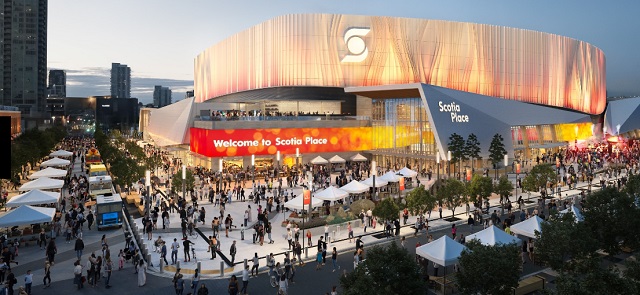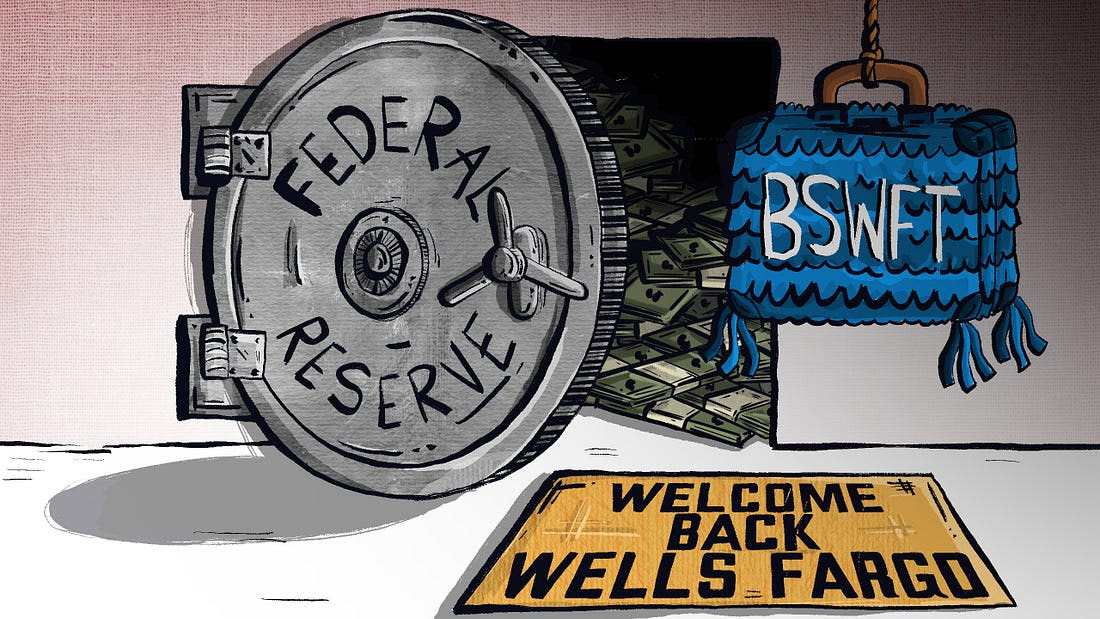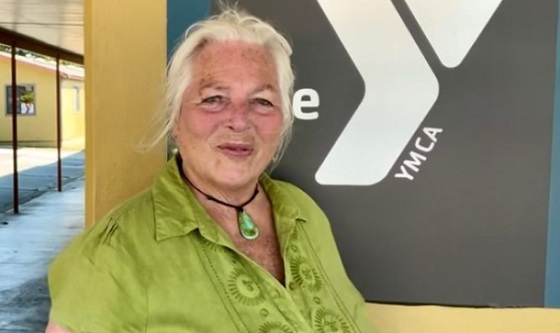Calgary
What Someone Who’s Been To ‘Mars’ Says About Isolation

During the winter of 2018, I spent two weeks at the Mars Desert Research Station (MDRS) in Utah as a citizen astronaut. The MDRS is an analog mission site, meaning it’s used to run experiments as if we were actually on Mars. It’s a facility for teams of scientists to dry run experiments and procedures, adding to the body of knowledge before we actually send people to Mars.
These simulated missions try and mimic real conditions as much as possible. We were not able to leave without a “spacesuit” on, we ate freeze-dried food, followed strict protocols, and enforced a communication delay between “Mars” and Earth. As the crew engineer for the MDRS188 team, I was responsible for the operation of the facility and to support the experiments being conducted.
But my biggest challenge was dealing with isolation. As the whole world is now finding out, isolation is a skill.
I learned a lot about myself during those two weeks. Here are some tips that I learned while dealing with isolation:
Schedule your downtime
In small confined spaces it’s easy for work to blend in with relaxation. While it may seem that working late hours is more productive, this leads to burnout very quickly. When you are working in the same place that you relax in, it’s extremely important to schedule in your downtime.
While in simulation, we had set time where we would drop what we were doing and commit to downtime. We scheduled movie nights, played games, did yoga; anything but work. This allowed our minds to take a break and relax. Just like a muscle, you need to allow rest time for your brain else it will get overworked.
Scheduling downtime every day meant that we were able to start every day fresh and relaxed.
Personal Status updates
As the COVID-19 situation unfolds, it’s important to understand how those changes are affecting you. Each person, city, and country will be affected differently. We are programmed to deal with adversity, but all too often our coping mechanism is to power through issues.
While that can work in the short term, it’s a disastrous longterm solution.
During the mission, we had morning briefings to go over our daily and weekly objectives. These meetings followed a normal work agenda, but we also spoke about personal issues. We talked about how we were feeling, how yesterday went, and how we wanted to adjust our work to maximize our output.
Each person needed to understand their own status before they could properly share it with the team.
Reflecting on your own status allows you to adjust your actions. What worked yesterday may not work today. The schedule you had in the office may not work at home. You need to experiment to find what works for you. Try 10 pushups before a meeting to replace your 10 am walk, or maybe you need to schedule a 5 pm call with your team to gossip about issues at the office.
Baking sourdough bread may have been fun week 1, but it’s lost its luster on week 4. We are all in a stressful situation, and it’s necessary to make adjustments along the way.
Doing honest checkups with yourself allows you to adjust your behavior to fit your needs.
Never Stop Communicating
When we spent long periods of time alone, it can become a habit to keep to ourselves. Dynamic situations are when we need to communicate the most. You need to take extra efforts to reach out to people and maintain communication links with them.
The MDRS is a remote facility without anyone else for miles around. There is also an imposed communication delay to mimic the distance from the Earth to Mars. It truly felt like we were all alone. Right from day one, we made sure to keep communication between the team open, honest, and frequent. It was vitally important for the success of the mission and our own mental health.
You should put extra effort into communicating with your family, friends, and coworkers more than ever in periods of stress.
Have Fun
Fun is extremely important to your mental health. In times of prolonged stress it’s more important to actively look for fun in order to calm your central nervous system.
For long-duration space missions, the human element is the biggest variable. All the machines and hardware can be analyzed down to the millimeter, but the humans are always changing. A big research component of analog missions is testing team dynamics and maximizing performance. Having fun is a big part of being human, and leads to better performance. On our mission having fun was an explicit component that we researched.

Remember, isolation is a marathon, not a sprint. You have to adjust the way you tackle new challenges so that you can maintain your work output. This requires you to be honest with yourself and seek guidance from others. It’s a skill like any other, and it takes practice.
For more stories, visit Todayville Calgary
Alberta
Calgary taxpayers forced to pay for art project that telephones the Bow River

From the Canadian Taxpayers Federation
The Canadian Taxpayers Federation is calling on the City of Calgary to scrap the Calgary Arts Development Authority after it spent $65,000 on a telephone line to the Bow River.
“If someone wants to listen to a river, they can go sit next to one, but the City of Calgary should not force taxpayers to pay for this,” said Kris Sims, CTF Alberta Director. “If phoning a river floats your boat, you do you, but don’t force your neighbour to pay for your art choices.”
The City of Calgary spent $65,194 of taxpayers’ money for an art project dubbed “Reconnecting to the Bow” to set up a telephone line so people could call the Bow River and listen to the sound of water.
The project is running between September 2024 and December 2025, according to documents obtained by the CTF.
The art installation is a rerun of a previous version set up back in 2014.
Emails obtained by the CTF show the bureaucrats responsible for the newest version of the project wanted a new local 403 area code phone number instead of an 1-855 number to “give the authority back to the Bow,” because “the original number highlighted a proprietary and commercial relationship with the river.”
Further correspondence obtained by the CTF shows the city did not want its logo included in the displays, stating the “City of Calgary (does NOT want to have its logo on the artworks or advertisements).”
Taxpayers pay about $19 million per year for the Calgary Arts Development Authority. That’s equivalent to the total property tax bill for about 7,000 households.
Calgary bureaucrats also expressed concern the project “may not be received well, perceived as a waste of money or simply foolish.”
“That city hall employee was pointing out the obvious: This is a foolish waste of taxpayers’ money and this slush fund should be scrapped,” said Sims. “Artists should work with willing donors for their projects instead of mooching off city hall and forcing taxpayers to pay for it.”
Alberta
Scotia Place – Calgary unveils design for new arena / events centre

News release from the City of Calgary
Scotia Place, Calgary’s new event centre, designed as a place for community where there is room for everyone
The City of Calgary and Calgary Sports and Entertainment Corporation (CSEC) are excited to reveal the design for Calgary’s new event centre – formally named Scotia Place.
The design is influenced by the ancestral and historical land of Indigenous Peoples and the culturally significant site that embodies our shared purpose – to gather. It brings together Indigenous cultural perspectives with Calgary’s and the region’s natural beauty, reflecting the four elements of nature – fire, ice, land and air.
A striking feature of the building is the central structure with a textured flame motif that emulates a home fire, which is further amplified when it is lit at night. The home fire, a place of warmth and energy that brings people together to share stories of the past and create stories for the future, rises from the white, glacial-like forms that define the lower parts of the building.
“When you consider that Calgary is already the envy of other cities with a new world-class convention centre in the heart of the Culture + Entertainment District, the addition of Scotia Place is another signal to investors that our city understands how to build a future that leverages hospitality and hosting as its core strengths,” says Mayor Jyoti Gondek. “We are also acknowledging and honouring the foundational role that Indigenous communities have played for generations in making Calgary, and now Scotia Place, a space where we all belong.”
Scotia Place, which is scheduled to open in fall 2027, celebrates the area’s importance as a place for all and will be a landmark attraction in Calgary’s emerging Culture + Entertainment District. More than a building, however, the 10-acre city block is designed for community and connection and includes a community rink, outdoor and indoor plazas spaces, four restaurants, the Calgary Flames Team Store, and future development opportunity in the northeast corner. It will provide gathering places and amenities for the 8,000 people who will live in this new downtown neighbourhood.
“Calgary has a long history of hosting world-class events, drawing millions of visitors to the city each year, generating revenue for local businesses, and boosting the economy,” says Danielle Smith, Premier of the Province of Alberta. “With construction on the Calgary Rivers District and Event Centre now underway, Calgary is one step closer to a revitalized downtown that will bring new energy into the city, attract more exciting events, and create jobs to improve the quality of life for Calgarians.”
A development permit application for the facility was submitted on July 19, 2024. This was a significant milestone for the project team, consisting of CAA ICON, HOK-DIALOG, and CANA/Mortenson. People interested in following or commenting on the permit can find the application at Calgary.ca/dmap. The application is expected to be heard by the Calgary Planning Commission by end of 2024.
“This is an important day for Calgary,” says Councillor Sonya Sharp, Event Centre Committee Chair. “Today is about so much more than the designs of a building. Today is the unveiling of a place where Calgarians and visitors from around the world will make memories at concerts, and sport and community events. I hope that everyone is as excited as we are, knowing that Scotia Place will become the complete experience in our new Culture & Entertainment District.”
“At CSEC, a key component of our mission is to be the heartbeat of our community, create connections and bring people together,” said Robert Hayes, CSEC President and CEO. “Scotia Place will become the perfect home to achieve and share this mission with all Calgarians. Seeing the design brings the vision of so many contributors to life. We are especially thankful to the City of Calgary and the Province of Alberta for their leadership and support to help bring us to this point. In stride with our partner Scotiabank, we are very proud to play our role in presenting Scotia Place as the culmination of diligence and passion, that is now visual in this breathtakingly beautiful and meaningful facility.”
“For years we have seen firsthand the value these partnerships bring to the communities in which we operate and for our clients,” said Aris Bogdaneris, Group Head, Canadian Banking of Scotiabank. “Scotia Place introduces a bold new vision for what will be Alberta’s premier sports and entertainment venue. For nearly 20 years, Scotiabank has been a proud partner of Calgary Sports and Entertainment Corporation and together, we are committed to bring fans and our clients an unforgettable experience when they walk through the doors of Scotia Place.”
“We are excited to start the construction of the critical infrastructure needed to build thousands of new homes and to make the Calgary’s new Culture + Entertainment district a reality,” says Devin Dreeshen, Minister of Transportation and Economic Corridors. “Albertans expect basic infrastructure to be maintained and improved and this commitment from the province goes a long way in helping Calgary build these projects.”
Acknowledging the significance of the building’s location at the confluence of the Bow and Elbow Rivers on the ancestral land of the Treaty 7 Peoples and the Metis Nation, The City, CSEC, HOK-DIALOG and CAA ICON worked with an Indigenous Advisory Group that included representatives from the Treaty 7 Nations, the Métis Nation of Alberta, Region 3, and the Urban Indigenous community throughout the design process.
“It was great to be part of a truly representative voice that included all indigenous peoples of southern Alberta regarding the design of this center acknowledging the historic significance of the land it sits on to the Metis people,” said Carmen Lasante Captain of the Calgary Elbow Metis District. “Inclusivity is a core part of who the Metis are. The City has worked hard to include many diverse histories together in creating this space.”
“Engaging in the right way is fundamental to the success of relationship development with the Indigenous communities, as we have played a critical role in the identity of the land now known as the city of Calgary as the Indigenous nations are inextricable linked to the landscape and environment,” says Ira Provost, Piikani Nation Consultation
A key theme heard often during the Indigenous engagement sessions was “Come in, there is room”, making it clear that Scotia Place needs to be a place that is designed for all.
The public plazas are designed to honour the deep-rooted connection that Indigenous Peoples have with the land, incorporating representations of the tipi, Métis Trapper’s Tent, and elements of Alberta’s world-renown natural landscape.
An important design decision was to lower the event and ice surface so that the primary concourse will be at street-level. Calgarians and visitors will be able to move seamlessly between the curb, the primary concourse and the outdoor public plazas.
“We at DIALOG are thrilled to join forces with HOK and combine our unique expertise to transform Calgary’s Event Centre into the catalyst for a dynamic new urban community,” says Doug Cinnamon, Partner Architect at DIALOG.
“Other design principles including public realm activation, the integration of indigenous influences, public art & storytelling, sustainability, and a balance between past, present, and future is central to our vision. The ultimate goal is to ensure seamless accessibility, promote mixed uses, and create vibrant public areas for everyone to enjoy. This joint redesign represents an opportunity to spur investment into the area and enhance its cultural vitality, anchoring Calgary’s position as a thriving, bustling community hub.”
Scotia Place is a generational investment in Calgary’s emerging vibrant Culture + Entertainment District. A modern event centre with universal accessible design throughout and with energy and water conservation built in to maximize efficiencies and the ability to be net-zero by 2050, Scotia place is designed to serve Calgary’s growing community for decades to come.
Construction begins this week. Additional information about Scotia Place including design renderings, a video, and frequently asked questions is available on Calgary.ca/ScotiaPlace.
-

 Agriculture1 day ago
Agriculture1 day agoCanada’s supply management system is failing consumers
-

 Alberta18 hours ago
Alberta18 hours agoAlberta uncorks new rules for liquor and cannabis
-

 Crime18 hours ago
Crime18 hours agoProject Sleeping Giant: Inside the Chinese Mercantile Machine Linking Beijing’s Underground Banks and the Sinaloa Cartel
-

 Business1 day ago
Business1 day agoPrairie provinces and Newfoundland and Labrador see largest increases in size of government
-

 Banks2 days ago
Banks2 days agoWelcome Back, Wells Fargo!
-

 International2 days ago
International2 days agoWoman wins settlement after YMCA banned her for complaining about man in girls’ locker room
-

 Economy1 day ago
Economy1 day agoTrump opens door to Iranian oil exports
-

 International9 hours ago
International9 hours agoTrump transportation secretary tells governors to remove ‘rainbow crosswalks’




